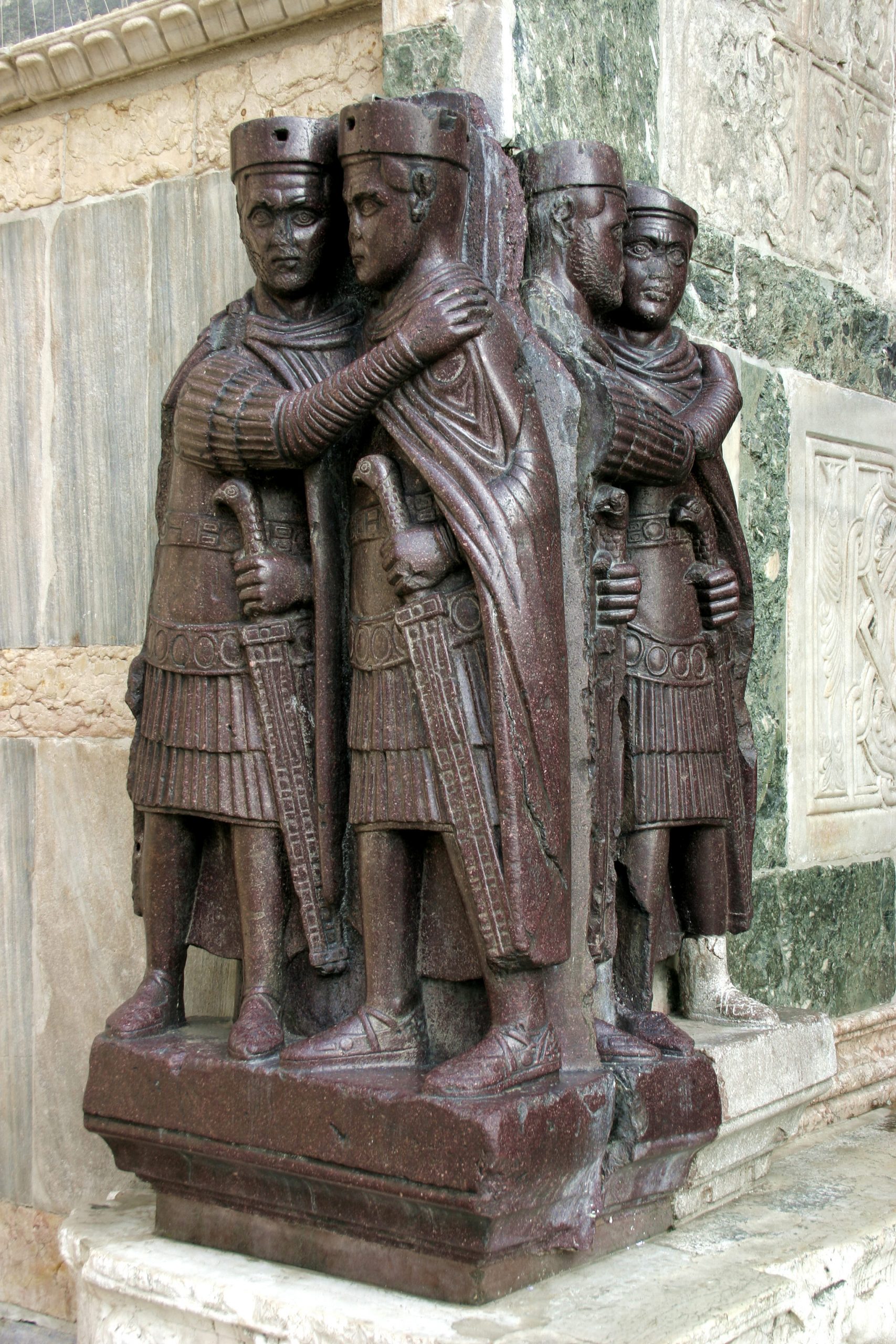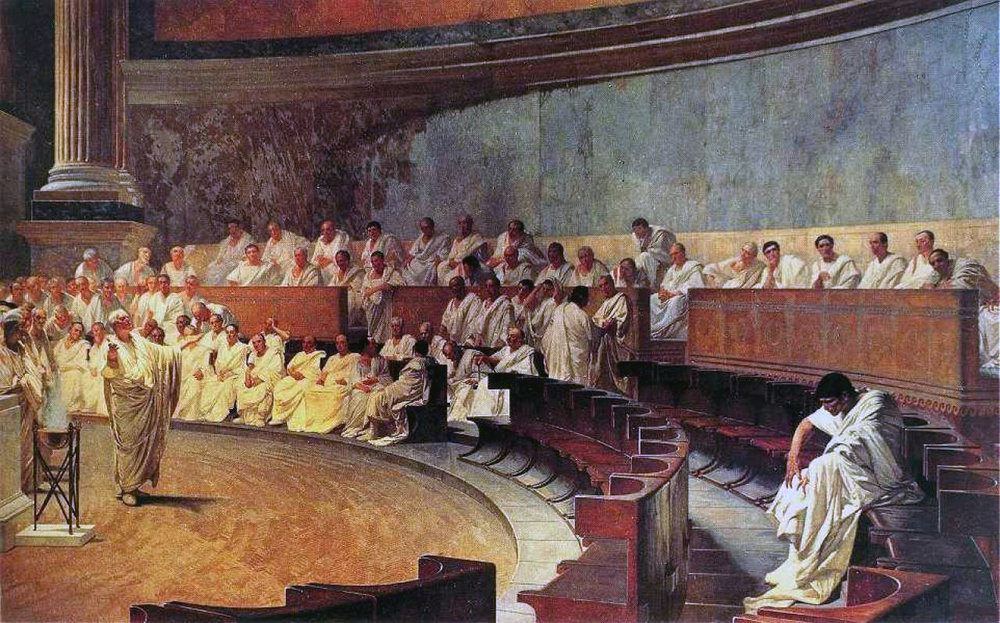THE FALL OF THE EMPIRE
THE BEGINNING OF THE END
It was under Marcus Aurelius (161-180 AD) that Rome began to suffer conflict, war and other unrelated problems of famine and disease. Marcus Aurelius’ 19-year-old son Commodus was known for decadence, cruelty and above all, incompetence; he was eventually killed by his own advisors and a period of civil war began.
In the third century Septimius Severus restored peace but the Severan dynasty (the last hereditary rulers) was disturbed by highly unstable family relationships, as well as constant political turmoil. From 235 A.D. on, generals were crowned Emperor by their troops and the next fifty years saw 41 Emperors.
When Diocletian came to power in 284 A.D., the government of the empire was divided between the two senior emperors, the augusti, and their juniors and designated successors, the caesares. Diocletian and his successor, Galerius, held power in the east while the west was ruled by Maximian and Constantius – the four of them were known as the Tetrarchy. The unity and stability of the Roman empire suffered greatly.

CONSTANTINE AND THE BATTLE OF MILVIAN BRIDGE
Ultimately it came down to Maxentius (Maximian’s son) in the West and Constantine (Constantius’ son) in the East. The Battle of the Milvian Bridge (Ponte Milvio in Rome) in 312 A.D. ended with Constantine who took sole control and began to change the shape of the Empire. After legalising Christianity and building the first Christian churches (including St Peter’s Basilica) he turned his focus East, where the wealth was. Byzantium was renamed Constantinople – the new capital of the Roman Empire and Rome in the west started to decline.
Internal conflicts, threats from abroad and constant warfare (barbarian invasions) left the city of Rome in tatters and the treasury empty.
One by one, Rome lost its provinces and in 476 A.D.;the last emperor in Rome was deposed by the Germanic king Odoacer. The Roman Empire had fallen. The Byzantine Empire as it is now known (Roman East), would continue until the 15th century.



